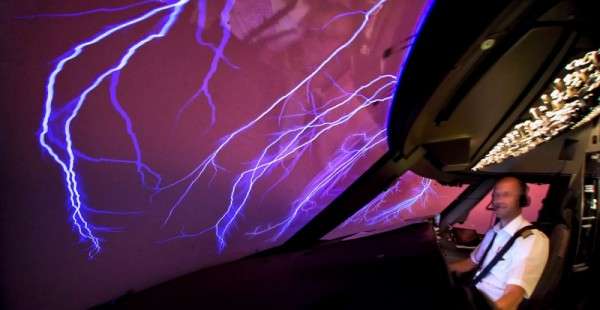St. Elmo’s Fire in Aviation: The Mysterious Glow Around Aircraft
What Is St. Elmo’s Fire?
St. Elmo’s Fire is a rare but fascinating electrical weather phenomenon that can appear on aircraft flying near thunderstorms or in highly charged atmospheres. It manifests as a blue or violet glow on sharp, conductive parts of the aircraft—most notably the nose, wing tips, static wicks, or cockpit windshield wipers.
Despite its fiery name, St. Elmo’s Fire is not fire. It is plasma, caused by ionization of air molecules around surfaces with a strong enough electric field.

How Does St. Elmo’s Fire Form on Aircraft?
The phenomenon occurs when:
- An aircraft builds up a high electrostatic charge while flying through stormy weather or near cumulonimbus clouds.
- The electric field surrounding the aircraft exceeds the dielectric breakdown strength of air, usually ~30 kV/cm at sea level.
- Air around pointed objects becomes ionized, creating a continuous, faintly glowing corona discharge.
This glow is typically accompanied by a buzzing or hissing sound, though it is often only visible and audible at night or in very dark cockpit conditions.
What Does St. Elmo’s Fire Look Like?
On aircraft, St. Elmo’s Fire is most often seen as:
- A bluish or violet glow on the windscreen, nose cone, or antennas
- Faint sparkling light from wing tips or static dischargers
- Sometimes described by pilots as “ball lightning”, though it is a different phenomenon
While visually striking, St. Elmo’s Fire is not harmful to the aircraft or crew and is not the same as lightning. Lightning is a massive discharge event, while St. Elmo’s Fire is a localized and continuous ionization.
Historical and Cultural Background
The phenomenon is named after St. Erasmus of Formia, also known as St. Elmo, the patron saint of sailors. Sailors regarded the glow appearing on ships’ masts during storms as a sign of protection.
In aviation, St. Elmo’s Fire has been observed since the early days of flight and remains a powerful reminder of the atmospheric forces pilots encounter.
Pilot Response and Safety Measures
Modern aircraft are built with static discharge wicks and composite radomes to manage static electricity buildup. When pilots see St. Elmo’s Fire:
- They remain alert for nearby lightning activity or turbulence
- Weather radar and storm avoidance systems are closely monitored
- It’s taken as a visual cue, not an emergency
Aircraft can safely continue flying through areas with St. Elmo’s Fire, but diversion may be considered if the weather worsens.
St. Elmo’s Fire vs. Lightning: Key Differences
| Feature | St. Elmo’s Fire | Lightning |
|---|---|---|
| Nature | Corona discharge (plasma) | Massive electrostatic discharge |
| Duration | Continuous glow | Instantaneous flash |
| Visibility | Faint, bluish or violet | Bright white or blue flash |
| Effect on aircraft | Harmless | Can damage electronics |
| Sound | Buzzing/hissing | Loud thunder or shockwave |
Conclusion
St. Elmo’s Fire is a rare and visually stunning phenomenon that underscores the complex relationship between aircraft and the weather. Though it may look supernatural, it is a well-understood electrical discharge, and modern aircraft are designed to safely operate even when it appears.
Next time you’re flying through stormy skies and spot a bluish glow dancing on the cockpit glass—don’t panic. It’s just St. Elmo’s Fire, a sign that nature still holds a few sparks of mystery.
Recommended Article: Towering Cumulus Clouds: A Guide for Aviators


